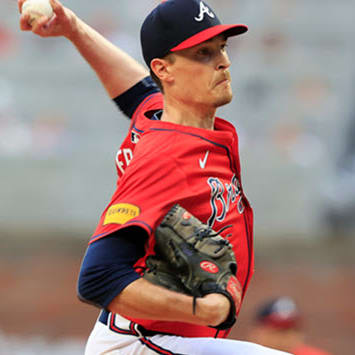This article is part of our MLB Observations series.
Last year, I made an elaborate Google doc synthesizing the Steamer, The Bat and NFBC ADP rankings (the former two were run through my dollar-value formula) and coming up with what I thought was the best of both worlds. I thought this in part because it worked so well for me in 2019. I explained my reasoning for combining the best market-based rankings with the best projection systems in the piece.
Even though it failed to bear fruit in last year's strange, small-sample environment I am considering doing it again for this year's presumably more normal season, but I'm on the fence. I still believe the best cheat sheet would combine the top projection systems that take into account the most relevant predictive factors with the collective wisdom of the market, but I'm unsure whether the NFBC ADP offers that.
The problem with the NFBC ADP is twofold: (1) that it's visible to drafters from the onset; and (2) that it gets so much respect. Drafts start in October, and everyone drafting subsequently can see the ADP from players taken in prior drafts. That means the ADP isn't the aggregate of thousands of unique drafters doing their own individual research (something that would be extremely robust and useful), but the product of each drafter looking at and being influenced by ADP. Moreover, this makes some sense because even if ADP were incorrect as a predictive tool, you'd still need to know which player would be more likely to come back to you in the following round.
So the early ADP, set by a few drafters with far less information so far ahead of the season, tends to influence everyone else's process and create a narrower lens through which everyone views the draft board. Of course, new information and certain draft trends will change some players' ADPs, but the majority of players don't have market-moving news on them heading into the year.
Maybe that's not a huge problem if we believe the market corrects the low-information initial ADP errors over subsequent drafts, and to some extent it does. But another problem arises when combining it with the projection systems which is that the systems themselves influence ADP, as many drafters incorporate them into their rankings during those initial drafts. And projections systems, while excellent at creating mean outcomes for the player pool, function poorly as a draft tool because the mean is not where overall contests are won or lost. So you have two distortions: the reflexivity of ADP and the use of projections that both fuel ADP and also are ill-suited for the purpose of winning fantasy leagues -- at least once you get out of Round 10 or so, where upside is far more important than the expected output.
Nonetheless, a perfect draft list is impossible, and both the mean projections and the market (even a slightly distorted one) offer good information. I'm just wrestling with whether the value of that information above simply having the ADP in front of me as a cross-off list outweighs the narrowing influence on my ideas of who I might take at a given point in a draft. As I said, I'm still on the fence.











